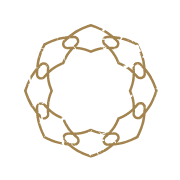Basic Movement Patterns
To reduce movement to a couple of patterns is a little reductionist and maybe even an insult to the holistic and all encompassing power and freedom of movement in general. From the point of teaching and learning it though, it can be very helpful to understand some basic patterns and how we at Hanuman Health Club incorporate them into our sessions.
In a previous world where lifting weights was just for those who wanted to look like comic book heroes exercise was described by the muscles trained.
Now the industry has progressed. It is common knowledge that adding resistance to your exercise, be it your body weight or an external load like a kettlebell has huge benefits to overall health. Part of this progression is that we no longer think about muscles but movement patterns. This helps to start looking at the body as a connected web of movement potential rather than a bunch of muscles working independently of each other.
Let’s look at the five basic patterns that we base our programming off. However, don’t forget that we believe all movement comes from the center of the body. If you have not already make sure you make yourself knowledgeable on how to build core strength and control.
No. 1 The Squat;
At Hanuman Health Club we define the squat pattern as the maximum flexion of the ankles, knees and hips while keeping a vertical torso. Basically a movement that asks the joints of your lower body to bend as much as possible while minimizing the bend of the back.
The position is a very primal pattern used as a resting position, an elimination position before the day's modern toilets and even a birthing position. There are a thousand different ways and reasons to squat.
We most commonly use the pattern as a way to train the anterior or front of the body. Teaching members how to feel the flexion of their hips, knees and ankles together. Our favorite squat exercise is the goblet squat. In general if members have a strong squat it will tell us that they have plentiful mobility in the lower body joints and solid trunk control.
No. 2 The Hinge:
The hinge is a movement pattern that you will often hear in the same breath as the deadlift exercise. We use the movement to teach members how to brace themselves against the inertia of picking something heavy off the ground or generating power through the hips for something like a jump or sprint.
From a biomechanical point of view we classify the hinge as maximum flexion of the hips with minimum flexion of the knees. The spine will be more horizontal than in a squat position. The idea of this movement is to engage and feel the posterior chain or back of the body.
The two exercises we use the most for training the hinge pattern are some form of deadlift variation and then for more experienced members, a kettlebell swing variation.
The Hinge.
The swing
No.3 & 4 Pushing and Pulling:
Pushing and pulling things, climbing, crawling. Pretty much anything involves using your upper body for something that requires strength we class as either an upper body push or pull. The pulling movements will in general use the posterior chain while the pushing movements in general hit the anterior side.
The most important biomechanical aspect of pushing and pulling is that we learn how to use the scapula or shoulder blades.
No. 5 Rotation:
Rotation is huge beast and to lump it into this blog as a paragraph is a huge disservice but getting a basic understanding of rotation is vital. It is the aspect of movement that will tie all the other elements of movement together.
For a deeper dive into rotation you check this out if you are bored.
The 5 basic patterns above are not an exhaustive list of movement. The beauty of movement is that its potential is endless but if you have been limited to a handful of positions for the last decade then that’s all your body is going to be able to handle. By breaking exercises and movement down into manageable chunks it will help you build and enlarge your capacity for greater movement over time. You will start to recognize patterns and make connections to real life movements, not just exercises in the gym. Equating picking up a heavy bag off the floor to the hinge pattern or looking over your shoulder while cycling to rotation. Pulling on a rope to scapular retraction. All of this is connected and as teachers we have failed you if you do not take the exercises we do in the into your daily life.
